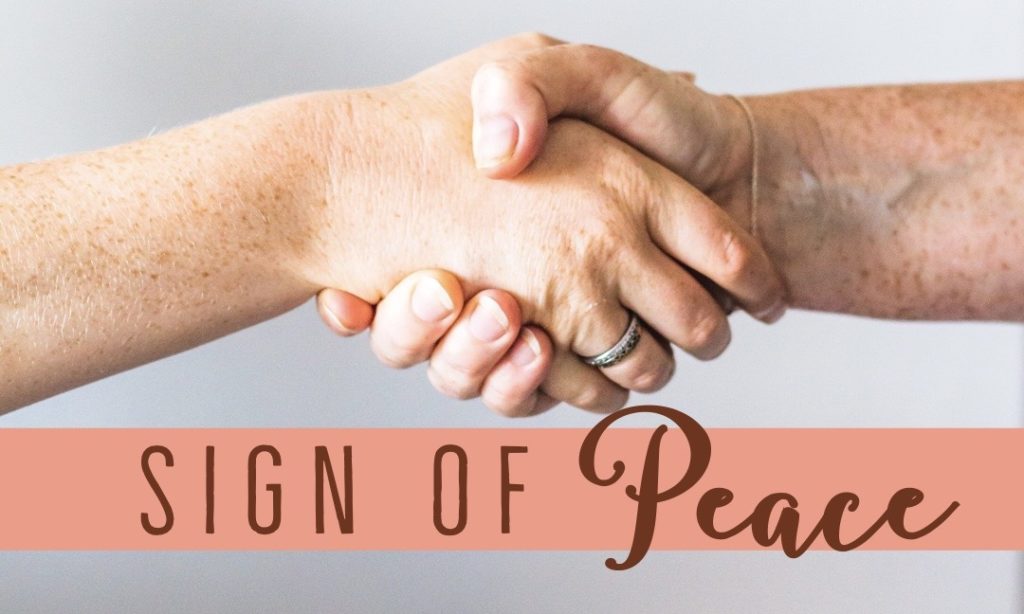
If you are a younger Catholic, you may not be aware that sharing the “sign of peace” did not become a common part of our liturgy until about a half-century ago — which makes the practice relatively modern in Catholic terms! Although not mandatory, handshakes and exchanges of the phrase, “Christ’s Peace be with you,” are the typical expressions of the sign of peace in our country. Even though our particular expression is relatively new, the practice — in varying forms — has always been part of the liturgy. The earliest recorded description of Mass written by St. Justin Martyr in 155 AD, contains the instruction, “When the prayers are concluded, we exchange the kiss” (CCC 1345). Though our particular expression of sharing the sign of peace may be relatively new, the basic liturgical reality has always been present.
Why Peace?
Have you ever wondered why we extend the sign of peace in the middle of the Liturgy of the Eucharist? In Sacramentum Caritatis, Pope Benedict XVI shares some important insight:, “By its nature the Eucharist is the sacrament of peace. At Mass this dimension of the Eucharistic mystery finds specific expression in the sign of peace. Certainly this sign has great value. In our times, fraught with fear and conflict, this gesture has become particularly eloquent … Certainly there is an irrepressible desire for peace present in every heart.” When we exchange the sign of peace as a community, ultimately we do not extend our own, peace. Rather, we pray that others will experience the peace that only Christ can bring to hearts and lives. Sharing the peace of Christ draws us together with others in union with Christ.
Scripture and Saints
Jesus gave some pretty clear instruction on reconciling with friends and family members before approaching the alter. “Therefore, if you bring your gift to the altar, and there recall that your brother has anything against you, leave your gift there at the altar, go first and be reconciled with your brother, and then come and offer your gift.” Jesus links our reconciliation with others to our reconciliation with God; our peace with others, to the supernatural peace given by God. Referring to the “kiss of peace,” which was the custom of the time, St. Augustine once preached, “Let peace be made in your conscience, that is, when your lips draw near to those of your brother, do not let your heart withdraw from his” (Sermon 227).
Symbol and Reality
The sign of peace that we typically extend to our family members and surrounding parishioners is a symbolic gesture the that suggests a deeper reality. We are called to be at peace with one another (Rom. 12:18), to be of one mind and heart (Acts 4:32). With Jesus transubstantiated before us, do our complaints and grudges really have merit? In this outward gesture we are called to reconcile within our hearts .
Pandemic Peace:
In order to minimize the transmission of germs, the congregational sign of peace is currently omitted from the order of Mass. However, the practice of making interior peace is always fruitful. Before receiving Holy Communion, make a simple practice of letting go. Sometimes you may experience bigger conflicts that need greater attention for authentic resolution. However, much of our familial and societal discord often stems from menial aggravations that we let fester and grow. With Christ present before you, offer these aggravations to Him and be at peace.





